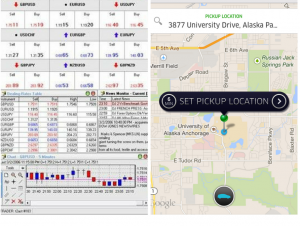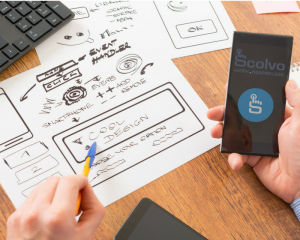[spb_text_block animation=”none” animation_delay=”0″ simplified_controls=”yes” custom_css_percentage=”no” padding_vertical=”0″ padding_horizontal=”0″ margin_vertical=”0″ custom_css=”margin-top: 0px;margin-bottom: 0px;” border_size=”0″ border_styling_global=”default” width=”1/1″ el_position=”first last”]
Mobile applications for the retail sector have developed way beyond the consumer space: many solutions are available for business partners to increase B2B sales and for employees to make work outside of the office more productive.
[/spb_text_block] [spb_image image=”17745″ image_size=”full” frame=”noframe” caption_pos=”hover” remove_rounded=”yes” fullwidth=”no” overflow_mode=”none” link_target=”_self” lightbox=”no” intro_animation=”none” animation_delay=”200″ width=”1/1″ el_position=”first last”] [spb_text_block animation=”none” animation_delay=”0″ simplified_controls=”yes” custom_css_percentage=”no” padding_vertical=”0″ padding_horizontal=”0″ margin_vertical=”0″ custom_css=”margin-top: 0px;margin-bottom: 0px;” border_size=”0″ border_styling_global=”default” width=”1/1″ el_position=”first last”]
In an effort to connect the online and offline channels, retailers have already been convinced of the advantages of a consumer-facing mobile app. Subsequently, such apps have taken the consumer space by storm: nowadays, 37% of shoppers have more than six of themon their phones.
These applications are likely to be well-known for you, either as shoppers or as a professional looking at the industry from a technology perspective. But there is more to this story: in an infinite aim to please the almighty customer, retailers have to think outside the box and find processes to optimize in the background.
B2B Apps in Retail
B2B customers are not less demanding than everyday shoppers: they want a seamless shopping experience. So the approach for developing a targeted mobile app would be the same and the process they go through.is not entirely different, either. Already in 2015, two-thirds of companies with a B2B focus said they offer a mobile app to clients as a primary marketing tactic, a Regalix Research survey showed.
What is different, though, is that productivity and efficiency are more in focus as they are directly related to business performance – a metric private shoppers don’t have to care about. With 75% of B2B customers using their mobile devices at some point of a purchaseand the consumer technologies penetrating this space, it is imperative to meet the needs of this audience for better business results.
Points of optimization:
- Pre-purchase research
A mobile application is a powerful tool in helping customers find what they are looking for. When the e-commerce content is redesigned and optimized for each channel consistently, B2B shoppers will find it quick and easy to identify or know more about a product. Mobile is also perfect to offer location-based services, helping customers find products based on where they are.
- Improving business efficiency
B2B buyers usually deal with a lot of products at once, shopping or returning items in bulk. In order to make this process smooth, a clutter-free mobile application can add much value. Successful apps keep only the features that are relevant to this mobile purchasing flow, like bulk buy, change of orders, check inventory, return items, and also make access to relevant documentations like invoices easy. Secure mobile payment adds up to the experience.
- Post-purchase issues
Every retailer knows that a purchase is not the end of a business relationship. Through a mobile app that has an easy way to contact the customer service, sellers can solve their customers’ problems easily without causing any other. Even if there is nothing be taken care, it can be nice to share purchasing history and other statistics with the customers through integrating the mobile app with selected databases.
B2E Apps in Retail
Efficiency is not only important for the buyer but also for the retailer itself. To achieve new levels in their field service or sales teams, businesses equip them with a mobile device and a dedicated enterprise app.
Points of optimization:
- Sales team management
In a workplace with a typically hard access to computers or classic workstations, a mobile application is a way to better manage the sales team. Through an app that is optimized for retail sales processes, the store managers can easily monitor, measure, and enhance their team’s performance by, for example, fine-tuning workflows or better scheduling tasks. They can even send out push notifications to staff about their shifts and assignments. Training elements can also be integrated in a mobile application, shortening onboarding times for new colleagues. Mobile tools can also enable chain managers to simplify the collaboration among branches or brands.
- In-store inspection
Store inspectors are the field workers of retail and, as such, the most obvious targets for mobility projects. With an enterprise mobile tool at hand, they can put in real-time data on demand and supply, check the actual inventory, and give feedback on the individual store’s performance for quality assurance. Backend integration makes it possible to run a competitor analysis.
- Supply chain optimization
With an access to corporate data that doesn’t depend on the user’s location, the efficiency of the supply chain’s operation can be improved and the whole process shortened. Real-time inventory data helps businesses plan better for delivery and storage, and up-to-date product information increases flexibility across the supply chain. Customer feedback can also appear instantly on the users’ devices and eventual problems can instantly be managed.
Let your clients enjoy the power of mobility optimized for their industry – Join the SCOLVO partner community today!
[/spb_text_block]




